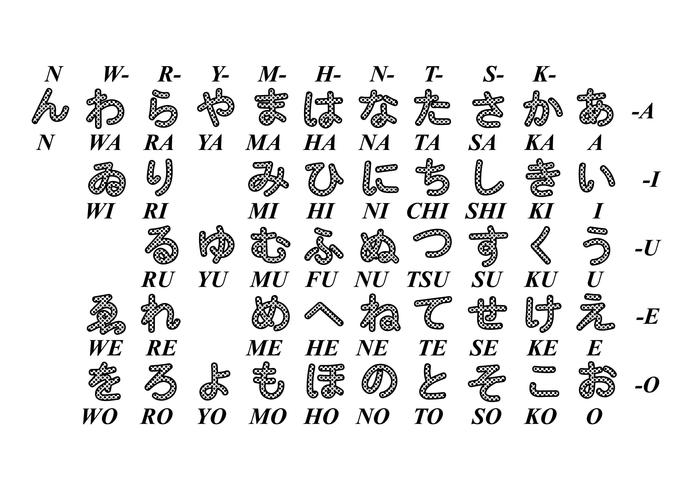
#Japanese letters plus
Or, some words are formed by two or more kanji together, or kanji plus hiragana (in this case, the hiragana is usually for a grammatical ending). One single kanji character could be a word by itself. This means that each character represents a block of meaning (unlike the kana, or the English alphabet, where each character represents a sound). This is because – you guessed it! – the Japanese language borrowed them from Chinese. The Japanese word kanji (漢字) literally means ‘ Chinese characters’. The last of our Japanese writing methods is kanji.
#Japanese letters free
So once you know hiragana, you can read and say anything in Japanese!Īlso, grab these free printable worksheets to practice writing your katakana.īy the way, hiragana and katakana are together known as ‘ kana’. These syllables represent all the sounds in the Japanese language. Each character corresponds to one syllable.
#Japanese letters how to
This means that once you’ve learned it, you will know how to pronounce any word written in hiragana. That’s because unfortunately romaji is just not used for real Japanese! If you ever want to learn to speak and read Japanese fluently, you will just have to learn the other three scripts. However, a good language learning program will move into hiragana as soon as possible. It’s also used in text books and language learning programs for beginners. Instead, it’s mainly used for translating road signs, town names, train timetables and so on, for the benefit of foreign visitors to Japan. That isn’t going to work.Īlthough romaji is an official script of Japan, as sanctioned by the government, it isn’t used in usual Japanese writing. I don’t need to learn those other scripts at all!” Now, you may be thinking “awesome! I’ll just write everything in romaji. Romaji, or roman letters, are used for writing Japanese sounds in English letters, to help non-Japanese speakers read Japanese. We’ll take a more detailed look at the uses of the different scripts below: Romaji You can see how all three scripts are intermingled in the same sentences. This is a phonetic script used mainly for foreign loan words. Katakana– simpler characters with a more ‘spikey’ shape. This is a phonetic script used for grammatical functions, word endings and similar. Hiragana– simpler characters with a rounded shape. These are used for basic blocks of meaning. Kanji– complex characters, taken from Chinese.


All the dancers wore beautiful costumes and parad ed 700m while sing ing and danc ing samba. In Brazil, the big gest Rio de Janeiro carnival has start ed.

Have a look at this sample text, which we’ve color-coded to show the three different types of character: They work together to show you the function and origin of each word. Each one indicates a different part of the language. This is because each script has a distinct purpose.


 0 kommentar(er)
0 kommentar(er)
